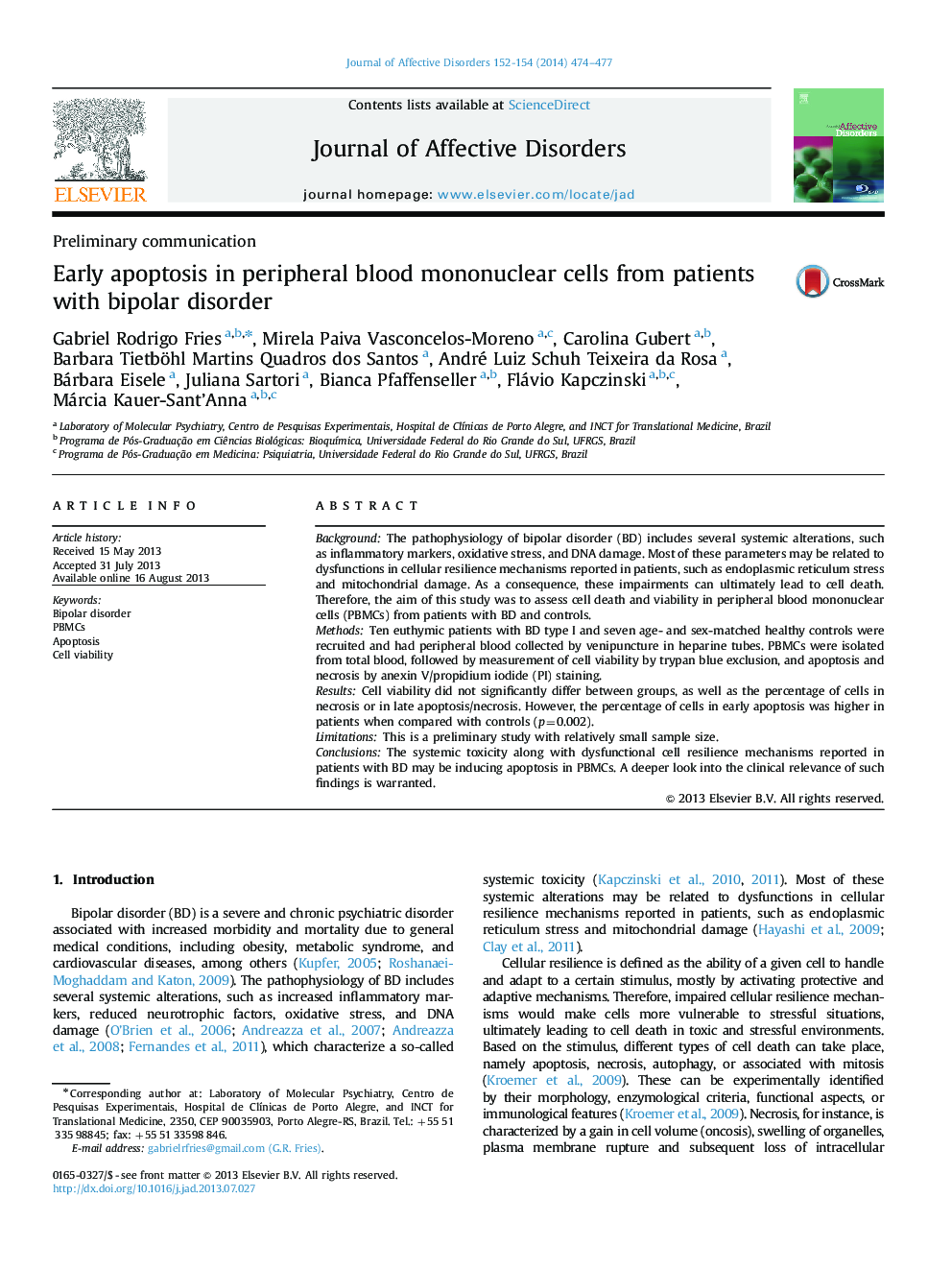| Article ID | Journal | Published Year | Pages | File Type |
|---|---|---|---|---|
| 6233241 | Journal of Affective Disorders | 2014 | 4 Pages |
BackgroundThe pathophysiology of bipolar disorder (BD) includes several systemic alterations, such as inflammatory markers, oxidative stress, and DNA damage. Most of these parameters may be related to dysfunctions in cellular resilience mechanisms reported in patients, such as endoplasmic reticulum stress and mitochondrial damage. As a consequence, these impairments can ultimately lead to cell death. Therefore, the aim of this study was to assess cell death and viability in peripheral blood mononuclear cells (PBMCs) from patients with BD and controls.MethodsTen euthymic patients with BD type I and seven age- and sex-matched healthy controls were recruited and had peripheral blood collected by venipuncture in heparine tubes. PBMCs were isolated from total blood, followed by measurement of cell viability by trypan blue exclusion, and apoptosis and necrosis by anexin V/propidium iodide (PI) staining.ResultsCell viability did not significantly differ between groups, as well as the percentage of cells in necrosis or in late apoptosis/necrosis. However, the percentage of cells in early apoptosis was higher in patients when compared with controls (p=0.002).LimitationsThis is a preliminary study with relatively small sample size.ConclusionsThe systemic toxicity along with dysfunctional cell resilience mechanisms reported in patients with BD may be inducing apoptosis in PBMCs. A deeper look into the clinical relevance of such findings is warranted.
